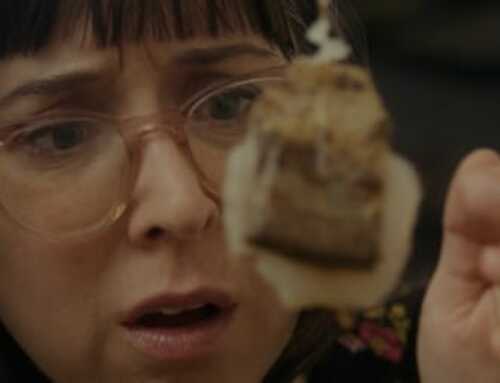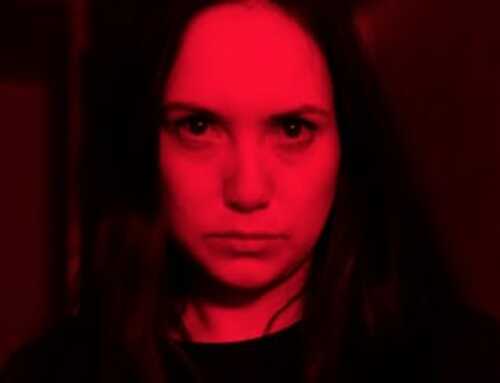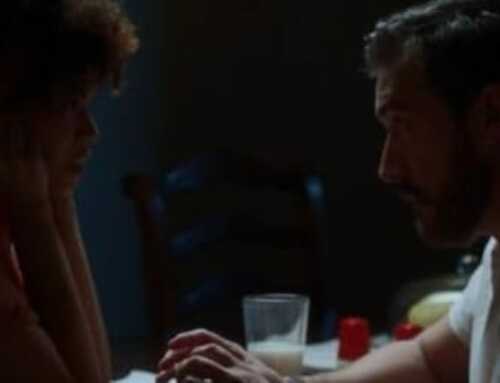New Brunswick native Heather Young recently made her directorial feature-length debut with the festival hit, Murmur. Having sharpened her directorial skill on the whetstone of her award-winning, independent shorts such as Fish (2016) and Howard and Jean (2014), Young also recently won the FIPRESCI Discovery Prize at the 2019 Toronto International Film Festival where Murmur premiered last year. With distribution and a limited theatrical release in Canadian cinematheques on the horizon for Murmur, the director, Heather Young, opened up about her artistic process, those to whom she is thankful, and about being a female member of the film community.
HB: So let’s start with your background. Who or what inspired you to create movies?
HY: I started taking film history classes when I was in university which got me interested in making my own film. So after I got an English degree I decided to go to film school, and after film school, I started making quite a few shorts. Some were small budget and then some on my own with no budget; I did that for several years before I made the first feature. I eventually applied to a Canadian program for first-time filmmakers called Talent To Watch, and that’s how I funded my first feature, which is Murmur.
HB: I don’t want to out you as a pet collector… but I see that you wrote Murmur as well. Would you say that any of the premise comes from your personal life?
HY: Parts of it certainly came from personal experience. Usually, when I’m working on an idea for a film it starts with something from my actual life — someone that I know or a place that I’m familiar with — which is partially the case with Murmur. I worked at an animal shelter right after my English degree, and since working there, I’ve always wanted to explore that environment in a cinematic way. I used the experience that I had at the animal shelter to inform the writing for Murmur to help make it unique and realistic from a lived perspective to hopefully portray that environment in an authentic way. Also, I made a very small film in 2014 called Howard and Jean, which I made with my mother, and it was about her relationship with her elderly chihuahua named Howard. It was kind of a documentary/fiction hybrid short that explored their relationship and how people can become dependent on their pets. After that short, I was thinking about how can I take that story to an extreme outcome and that’s when I started thinking about the animal hoarding scenario.
HB: Yes, the scenario was definitely interesting, this premise could have gone into horror, even. The style was like a docu-drama though, and the aesthetic made me feel almost like a Peeping Tom. How did you develop this docu-fiction aesthetic?
HY: I started working towards that style with my short films, I made 3 short films in that documentary-fiction hybrid style. Each of them were kind of either more in the direction of documentary or more in the direction of fiction depending on which project it was. I wanted to take that style with me into my feature because it worked pretty well for me in my last couple of short films so I figured I should take what we did in my shorts and not try to do something totally different for my first feature. In Murmur there is more fiction than documentary but there are definitely documentary elements to it. There was a script but none of the actors had ever acted before and are basically playing themselves — the veterinarian is a real veterinarian and the same with the cardiologist and the physiotherapist. Shan McDonald, who plays Donna, I cast her for a lot of reasons but one of the reasons being that she is a huge animal lover and I knew I wanted someone who had a genuine connection with animals to be the lead because I didn’t think that could be easily created. With Shan, we created the character in the sense that she’s basically being herself, none of the dialogue is scripted so that is another documentary element is that there is no script. Shan is really open and brave and honest and able to bring parts of her own life into the character, so that was really helpful. Also in terms of docs, we shot in a lot of businesses — the animal shelter was a working animal shelter that was open while we were filming, so it adds an unpredictability when you’re shooting in environments like that. You have to keep your crew small and flexible like a documentary crew and you can end up capturing unexpected moments the way you would as if you were shooting a documentary.
HB: So the doctors were not actors. Did you just walk into their offices and ask them if they wanted to be in a movie?
HY: Naturally. Sometimes we had connections. The veterinarian is a friend of mine, so that was a no brainer. The other people, it was friends of friends, or somebody knows somebody who is a counselor. I also reached out to some organizations in Halifax that work with the driving while impaired program, I would come in doing research for the script and then by the end of the meeting I would kind of ask them ‘how would you feel about being in the movie’? More often than not, people agreed to it.
HB: I noticed we couldn’t see their faces, and those conversations felt very clinical. Can we hear about that directorial choice?
HY: Yea, that was on purpose.We made the choice to not show a lot of the secondary characters’ faces and keep those interactions removed and clinical, for a dual purpose. One was to keep the main focus on Donna, the main character, so in those interactions I wanted the viewer to be paying attention to her and her reactions. Her experience of those interactions were more important to me than looking at the [other] people who were talking. Also, it creates this isolation for the character, it emphasizes that she’s not really making any meaningful connections.
HB: I don’t see many elderly female-led movies where she is not a banshee in a horror, or senile in a sappy melodrama. And it seemed like a lot of the medical characters were female too. Was it important to you that Murmur be female-lead?
HY: Yea there is a lot of female presence in the film. With Shan it was important for me to have an older female protagonist because it is rarely seen in cinema, it’s like at a certain point women become uninteresting, but I obviously don’t adhere to that. I wanted to give a voice to an older female character and assert that women of a certain age are still interesting. Another aspect is that I’ve worked in an animal shelter and a lot of the custodial labor there tends to be done by women, I worked almost entirely with women in the doggy daycare and animal shelter field. A lot of people think these jobs are cuddles and kittens but it is mostly custodial labor and cleaning up, and it’s been referred to in cinema as invisible labor and done predominantly by women. So that was also on my mind with this project, acknowledging that type of work and trying to look at it with refreshed contemplation and in interesting kind of way.
HB: Would you say that your experience in the film industry has differed by being a female filmmaker?
HY: Never anything in terms of blatant discrimination, but I think one thing that I have experienced because I am a female filmmaker is a lack of confidence. In my experience anyway, this seems to occur more predominantly with female filmmakers than male. A lot of my friends that are also female and in the industry have experienced feeling the imposter syndrome, not feeling confident on set, not feeling confident in applying to grants, or overall just feeling like you can claim your space as a member in the overall filmmaking community.
HB: What would you say helped you get through the filming process?
HY: I had people who helped me. This feature was a big undertaking for me and I couldn’t have done it by myself like how I did with some of my short films. My producer, Martha Cooley, was a huge part of the creative process. She was giving me notes on the script extensively, and she got me through the production phase and then gave me notes during the edits I was doing. She was there throughout the whole process. My DP Jeff Wheaton was really helpful to me during the shoot, he is more experienced on-set so when I would hit a roadblock where I didn’t properly know how to maneuver through a scene he would talk me through it and help me figure out what I was trying to do. Shan McDonald created the character with me. There were a lot of people who helped me.
How can we follow you?
- Instagram: @MurMurTheFilm
- Facebook: MurMur The Film
- Twitter: HouseplantFilms
- houseplantfilms.ca
The film was produced by Heather’s own company, Houseplant Films, so named due to her self-proclaimed obsession with houseplants. This charming director even recommended some cool houseplants for me. An obsession with houseplants is far healthier than an obsession with hoarding pets, as shown in her feature-length debut film, Murmur. Somehow, even though Murmur breaks the cardinal rule about pets being off-limits in movies, I still watched this film to the end. It is slow-paced but gripping — like quicksand, the film slowly pulls you into main-character Donna’s emotional vacuum, and it grows on you with further retrospection. Read our review for Murmur.







